Introduction
On the serene banks of the Nile lies Aswan, a city that embodies the timeless charm of Egypt. Often referred to as the country’s southern gateway, it has long been a place where cultures, trade, and history converge. Unlike Cairo’s fast pace or Luxor’s monumental scale, Aswan welcomes visitors with a slower rhythm, warm Nubian hospitality, and stunning natural scenery.
This enchanting destination offers more than just relics of ancient times. Palm groves sway along the Nile, desert landscapes stretch endlessly, and colorful Nubian villages brighten the golden surroundings. From sailing on a felucca to marveling at temples relocated stone by stone, Aswan weaves together history and tranquility, making it a highlight of any journey through Egypt.
Geographic and Historical Background
Situated in Upper Egypt, about 870 kilometers south of Cairo, Aswan occupies a strategic position at the first cataract of the Nile. This location once made it an essential border city, acting as both a military stronghold and a commercial hub. Goods such as ivory, spices, and gold passed through here, linking Egypt with Nubia and Africa beyond.
In ancient times, the city was known as Swenett or Syene, and it played a crucial role in supplying granite for some of Egypt’s most famous monuments, including obelisks, temples, and statues. Its quarries produced the stone used to build wonders like the pyramids of Giza and the grand temples of Luxor.
Culturally, Aswan has always been a diverse city. The influence of Nubian traditions, combined with Egyptian heritage, created a unique identity that is still visible today in local music, art, and customs. The city not only safeguarded Egypt’s southern border but also acted as a vibrant cultural crossroads.
Climate and Best Time to Visit
Aswan’s climate is typically hot and dry, with clear skies almost year-round. Rain is sporadic, making it one of the driest inhabited places in the world. Summers, stretching from May to September, bring intense heat with daytime highs often above 40°C (104°F). By contrast, winters from October to April are pleasantly warm, ideal for exploring historical sites and enjoying outdoor activities.
The cooler months are the best time to visit, with temperatures ranging between 23–28°C (73–82°F). These conditions allow travelers to comfortably tour temples, enjoy river cruises, and wander through markets.
Travel tip: Carry sunscreen, a wide-brimmed hat, and light cotton clothing. Plan outdoor excursions in the morning or late afternoon to avoid the harsh midday sun.
Getting to Aswan
Despite its southern location, reaching Aswan is straightforward thanks to several transport options:
-
By Air:
-
Aswan International Airport connects the city with Cairo, Luxor, and Abu Simbel, making flights the fastest choice.
-
By Train:
-
A scenic rail journey links Aswan to Cairo and Luxor. Overnight trains are especially popular with budget and mid-range travelers.
-
By Road:
-
Buses and private transfers are available from nearby cities, with Luxor just a 3–4 hour drive away.
-
By Nile Cruise:
-
Perhaps the most unforgettable way to arrive is on a Nile cruise from Luxor. These cruises combine relaxation with sightseeing, stopping at iconic temples along the riverbanks.
Thanks to these varied options, Aswan fits easily into most Egyptian travel itineraries.
Culture and Local Life
What makes Aswan special is not only its temples and monuments but also its vibrant culture. The city is deeply tied to the Nubian people, who have lived along this stretch of the Nile for thousands of years. Their traditions, language, and hospitality add color and warmth to Aswan’s atmosphere.
-
Nubian Heritage:
-
Nubian culture is easy to spot in the bright murals and geometrically patterned houses scattered along the river. Music and dance are central to celebrations, with rhythmic drumming and traditional songs bringing communities together.
-
Languages:
-
While Arabic is widely spoken, Nubians also preserve their native dialects, such as Nobiin. Hearing locals switch between languages reflects the cultural richness of the city.
-
Daily Life:
-
In the markets, vendors sell fragrant spices, handwoven textiles, and silver jewelry. By the riverside, fishermen prepare their boats at dawn, while children play near the water. Life in Aswan feels slower and more personal than in larger Egyptian cities.
-
Festivals:
-
During local festivals, Nubians dress in traditional clothing and celebrate with music, food, and dance. These events offer travelers a rare chance to see the living traditions of Egypt’s south.
For many visitors, connecting with Aswan’s people—whether by staying in a Nubian guesthouse, enjoying a family meal, or learning a dance—becomes just as meaningful as exploring temples.
Main Tourist Attractions
Aswan is home to some of Egypt’s most celebrated landmarks. These sites not only showcase the city’s ancient importance but also highlight its role in modern times.
The High Dam
Completed in the 1970s, the Aswan High Dam is an engineering achievement that reshaped Egypt’s future.
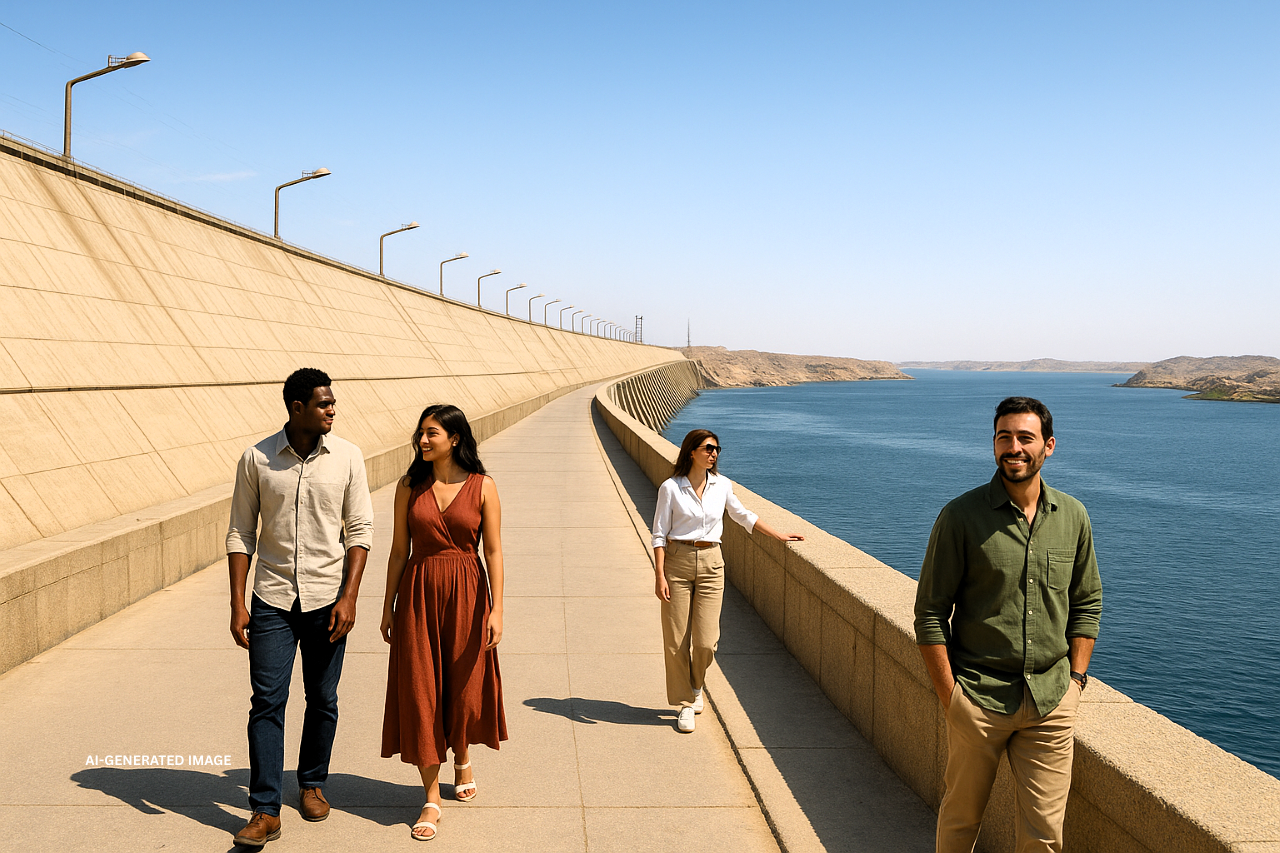
-
Purpose:
-
Built to control the unpredictable flooding of the Nile, it provides hydroelectric power and water for irrigation.
-
Lake Nasser:
-
Behind the dam lies Lake Nasser, one of the largest artificial lakes in the world, stretching deep into Sudan.
-
Visitor Experience:
-
A trip to the dam offers impressive views of both the Nile and Lake Nasser, giving a perspective on the scale of the project.
Though it displaced many Nubians and submerged temples, the dam remains one of Aswan’s defining modern landmarks.
Philae Temple
The Temple of Philae, dedicated to the goddess Isis, is one of the most breathtaking sites near Aswan.
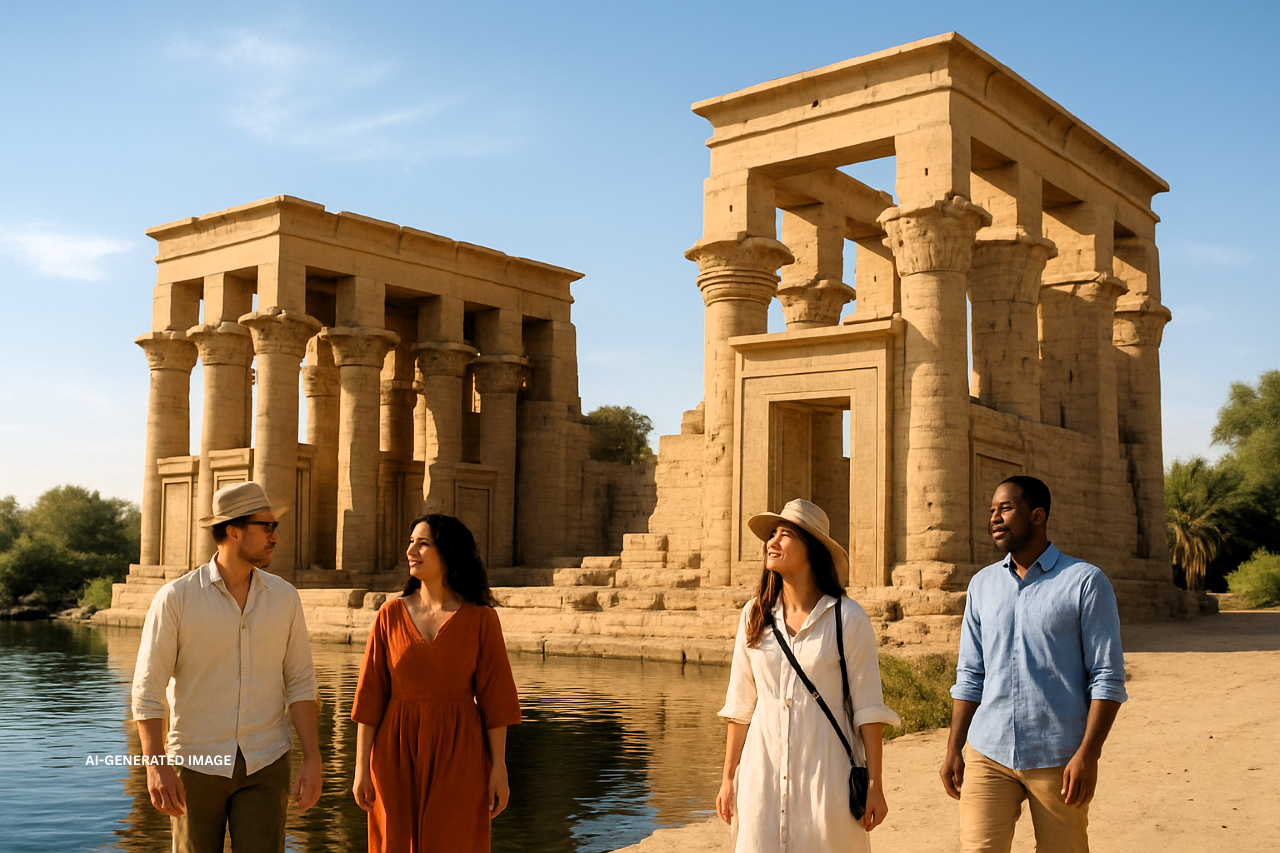
-
Relocation Story:
-
Originally located on Philae Island, the temple was threatened by flooding after the construction of the dam. In a remarkable UNESCO project, it was dismantled and rebuilt on nearby Agilkia Island.
-
Design:
-
The temple complex features towering pylons, hieroglyphic carvings, and sacred chambers that narrate myths of Isis and Osiris.
-
Light & Sound Show:
-
At night, the temple comes alive with storytelling projected on its ancient walls, creating an unforgettable experience.
Philae is not only a religious site but also a symbol of international cooperation to save world heritage.
Elephantine Island
Floating in the middle of the Nile, Elephantine Island blends ancient ruins with modern Nubian villages.
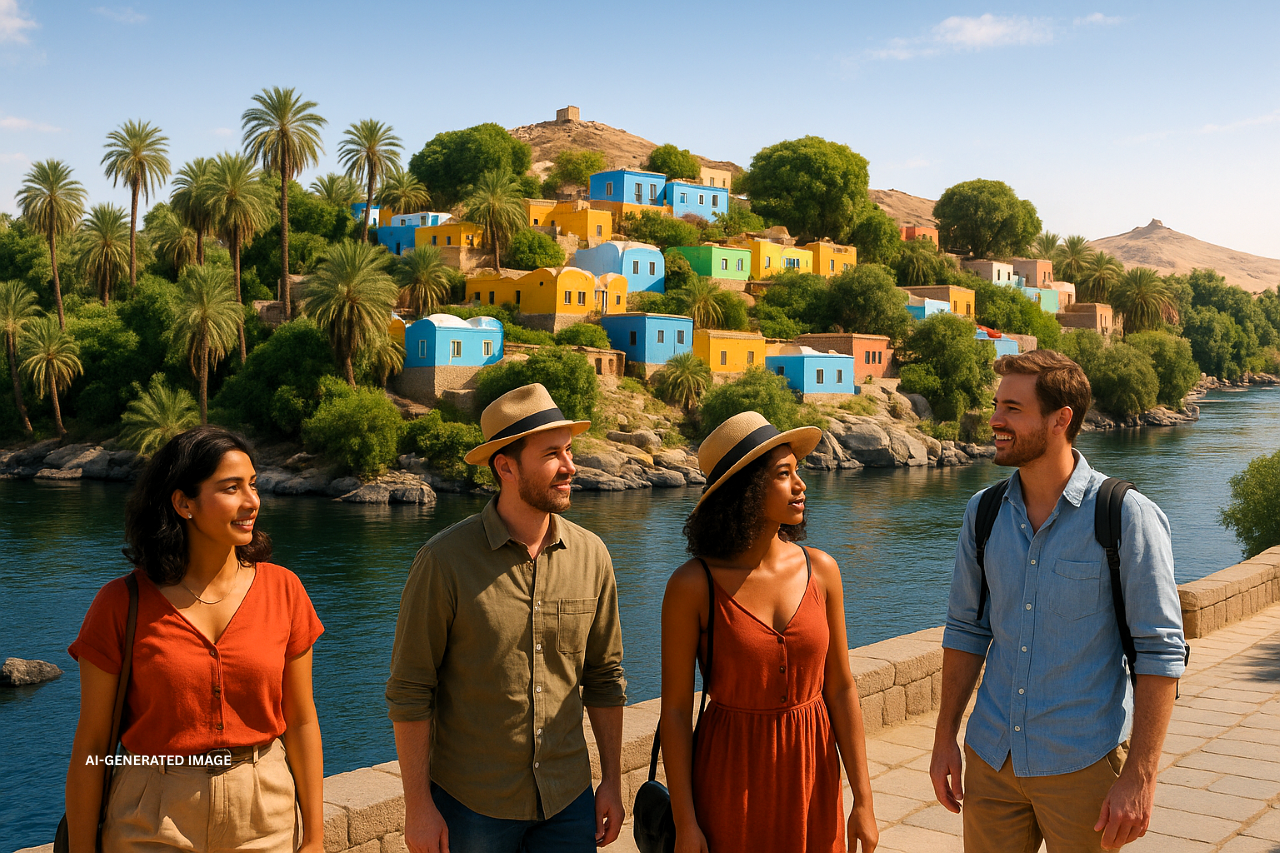
-
Historical Role:
-
Once a fortified trading post, it housed temples dedicated to Khnum, the ram-headed god of creation.
-
Aswan Museum:
-
Located on the island, the museum exhibits local artifacts from various eras.
-
Nubian Villages:
-
Two communities, Siou and Koti, showcase colorful homes and authentic daily life, making it a popular stop for cultural exploration.
The Unfinished Obelisk
One of Aswan’s most fascinating sites is the Unfinished Obelisk, still lying in the granite quarry where it was carved.
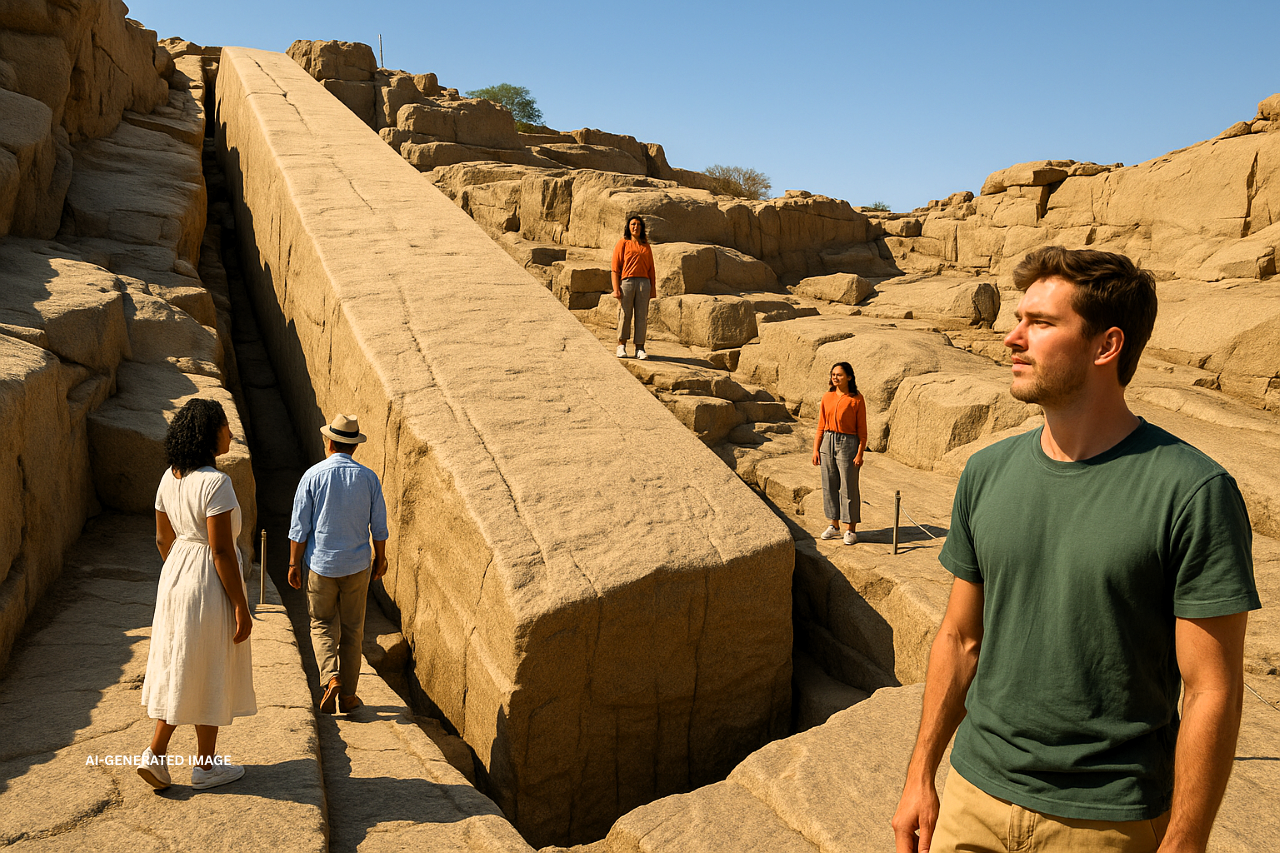
-
Construction Attempt:
-
Believed to have been commissioned by Queen Hatshepsut, the obelisk would have been the largest in Egypt, standing over 40 meters tall.
-
Why Unfinished:
-
Cracks appeared during carving, forcing workers to abandon the project.
-
Visitor Insight:
-
Visitors can see the tool marks and techniques used by ancient stonemasons, making this site an open-air workshop of history.
Nubian Museum
The Nubian Museum is a modern institution that preserves the heritage of Nubia, much of which was endangered by the creation of Lake Nasser.
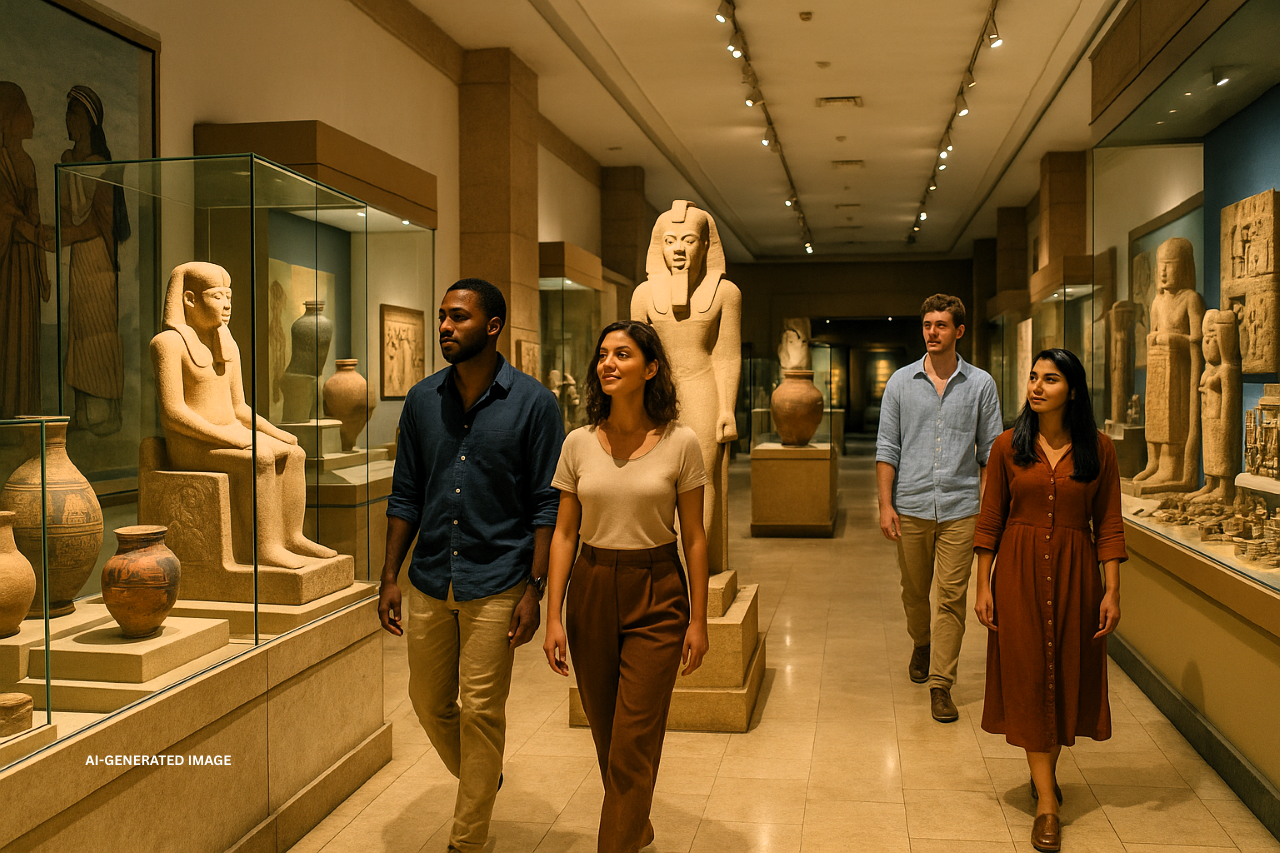
-
Exhibits:
-
The museum houses over 3,000 artifacts, from prehistoric tools to medieval manuscripts.
-
Architecture:
-
Designed to blend with Aswan’s rocky landscape, it also includes gardens filled with ancient statues.
-
Cultural Importance:
-
It tells the story of Nubia’s people, traditions, and survival, making it an essential stop for those interested in Egypt beyond the pharaohs.
Aga Khan Mausoleum
Perched on a hill overlooking the Nile, the Aga Khan Mausoleum is a striking structure built for Aga Khan III, leader of the Ismaili community.
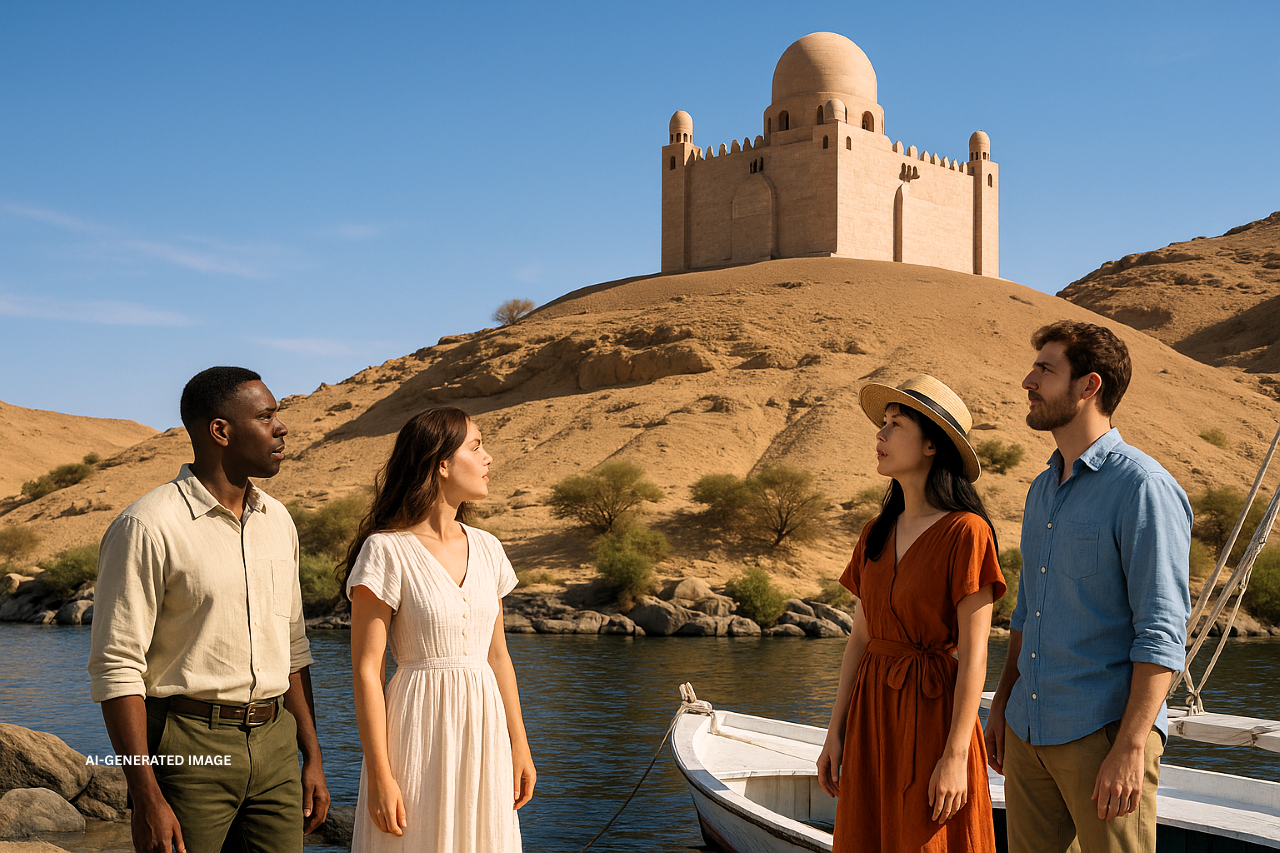
-
Architecture:
-
Its clean lines and pink granite construction reflect Islamic style.
-
History:
-
Commissioned by his widow, Begum Om Habibeh, the site has become a point of interest, even though entry is not allowed.
-
Viewpoint:
-
While closed to visitors, it can be admired during a felucca ride along the Nile.
Botanical Gardens (Kitchener’s Island)
For nature lovers, Kitchener’s Island is a green haven in the Nile.

-
Origins:
-
Once given to Lord Kitchener in the 19th century, the island was transformed into a botanical paradise.
-
Collections:
-
It contains exotic plants from Asia, Africa, and beyond, along with shaded paths and scenic spots.
-
Relaxation:
-
Popular with both locals and tourists, it’s ideal for picnics and peaceful walks away from the desert heat.
Tombs of the Nobles
Carved into cliffs on the west bank of the Nile, the Tombs of the Nobles reveal details about life in ancient Egypt.
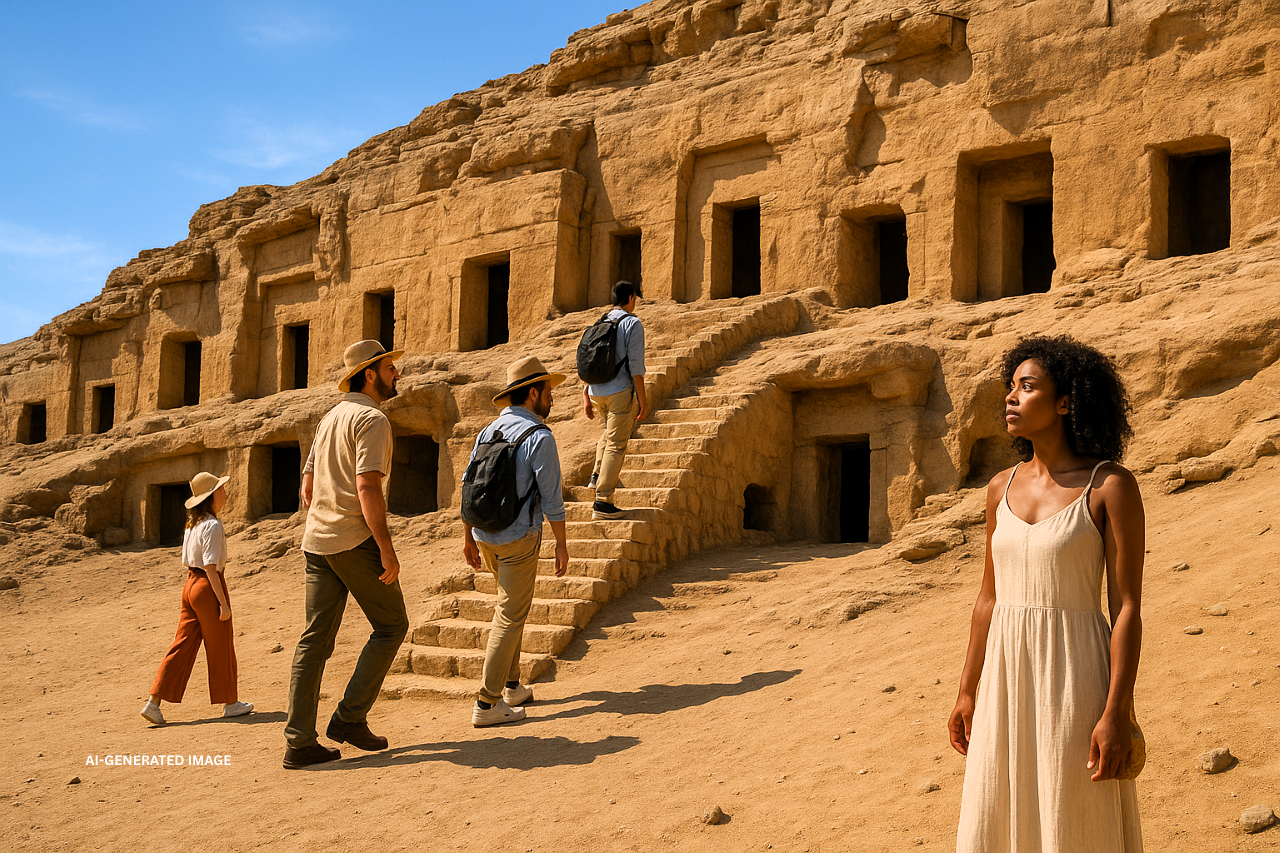
-
Paintings:
-
The tomb walls are decorated with vivid scenes of agriculture, hunting, and daily activities.
-
Famous Tombs:
-
The tomb of Harkhuf, an explorer who led expeditions into Africa, provides fascinating inscriptions.
-
Panoramic Views:
-
Climbing up to the tombs rewards visitors with sweeping views over Aswan and the river.
Monastery of St. Simeon
Located in the desert west of Aswan, the Monastery of St. Simeon showcases early Christian history.
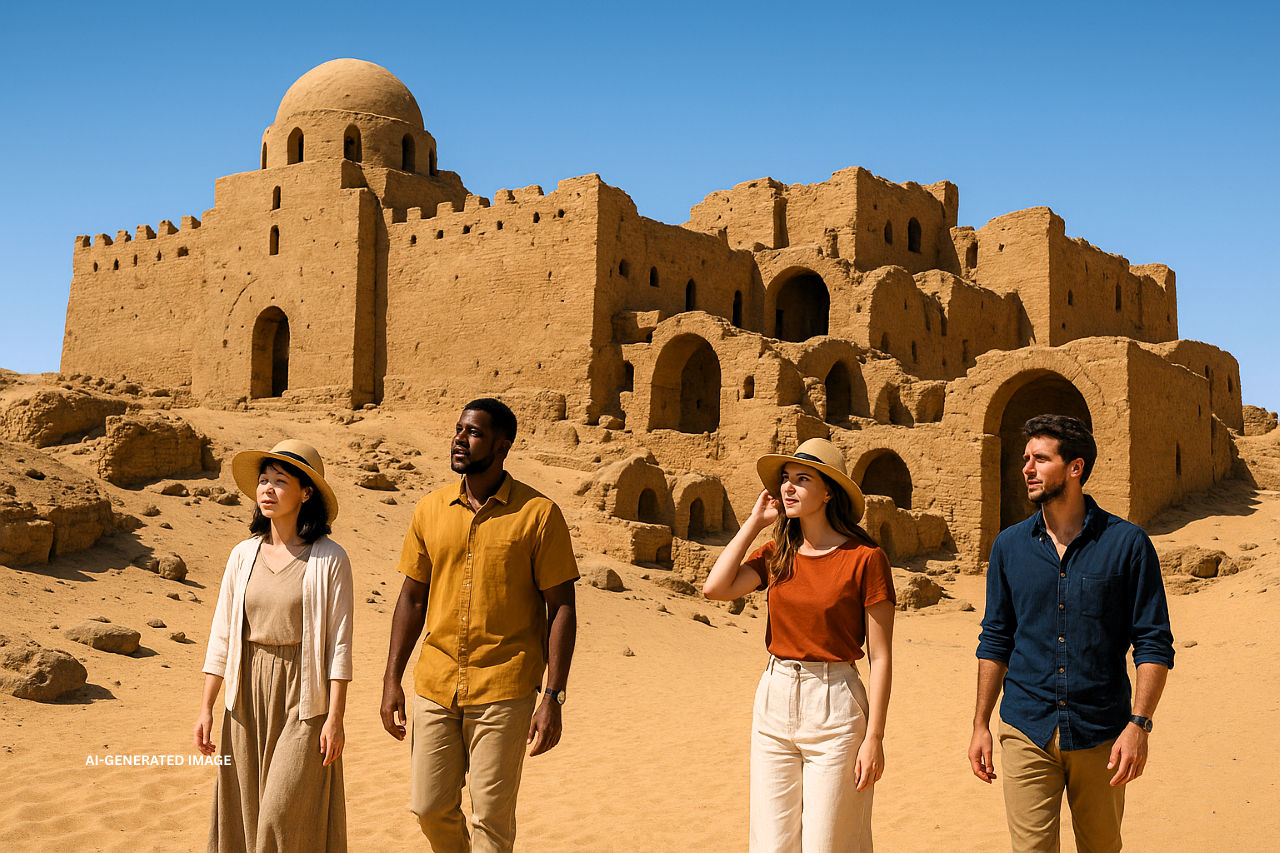
-
Foundation:
-
Built in the 7th century, it became a pilgrimage center before being abandoned due to a lack of water.
-
Features:
-
Its mud-brick walls, church ruins, and monk dwellings remain remarkably preserved.
-
Experience:
-
Many travelers reach the site by camel ride, adding adventure to the visit.
Day Trips and Excursions from Aswan
While Aswan is filled with incredible sights, it is also the starting point for some of Egypt’s most remarkable excursions. From colossal temples to peaceful lakeside monuments, day trips reveal the region’s broader cultural and historical importance.
Abu Simbel Temples
The Abu Simbel Temples are the crown jewel of excursions from Aswan.
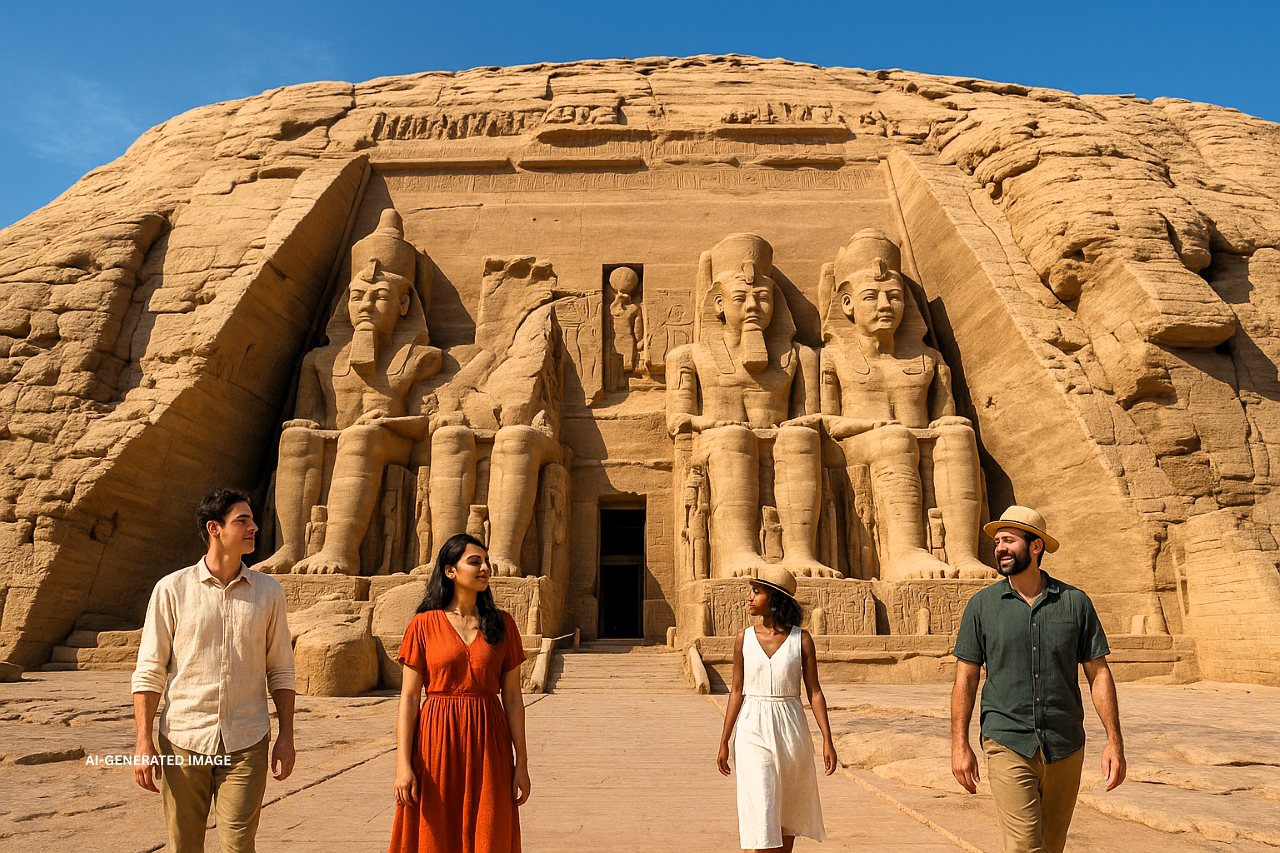
-
Historical Significance:
-
Built by Ramses II in the 13th century BC, the temples were intended to showcase the pharaoh’s power and devotion to the gods. The colossal seated statues at the entrance remain one of Egypt’s most striking images.
-
Relocation Effort:
-
When the High Dam was built, rising waters threatened to submerge the temples. In the 1960s, UNESCO spearheaded a rescue project, moving the temples piece by piece to higher ground—a feat as impressive as the monuments themselves.
-
Visitor Highlight:
-
Twice a year, during the Sun Festival (February 22 and October 22), sunlight penetrates the inner sanctuary, illuminating statues of Ramses and the gods.
Kalabsha Temple
Near Lake Nasser stands Kalabsha Temple, another monument relocated due to the High Dam.
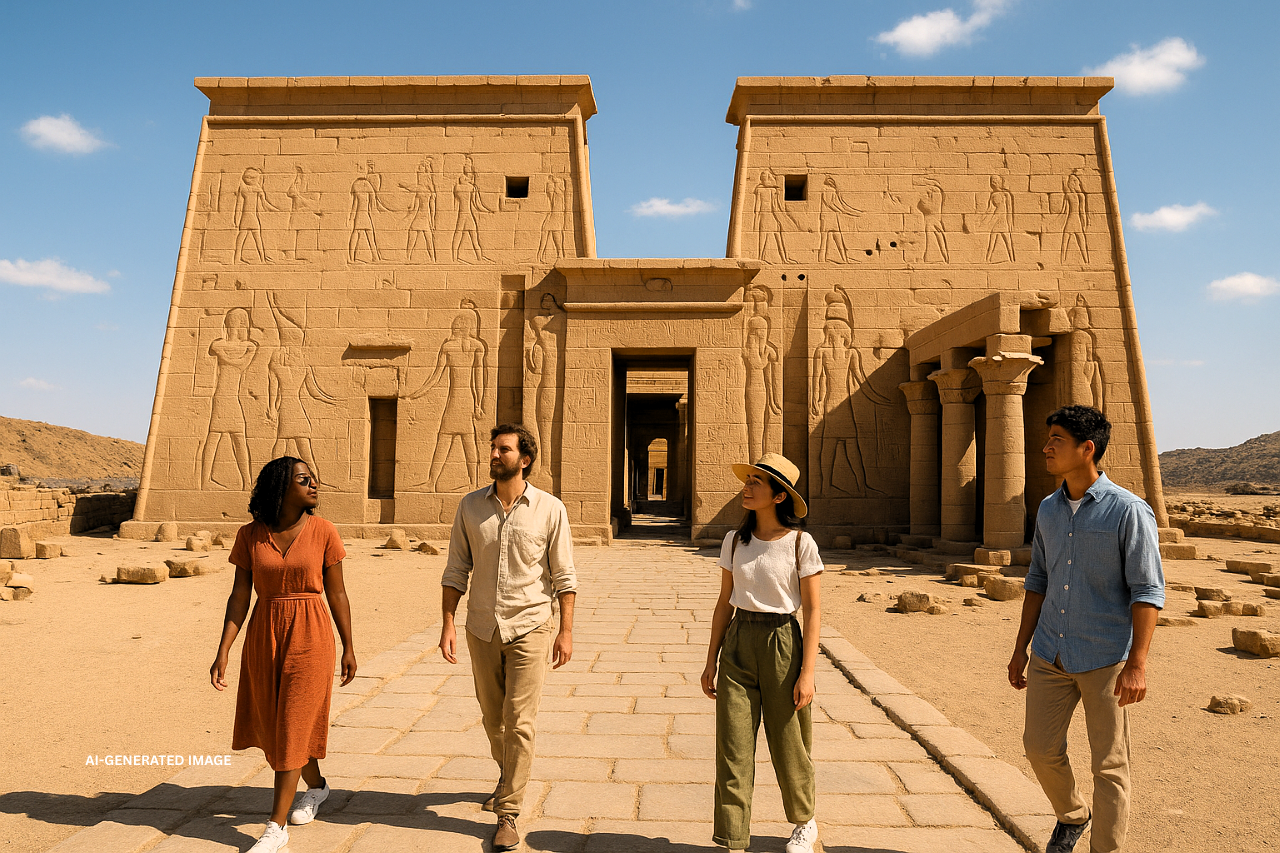
-
Dedication:
-
Built in honor of the Nubian god Mandulis, the temple reflects a blend of Egyptian and Roman styles.
-
Experience:
-
Its large pylons, courtyards, and reliefs are impressive, yet the site remains quieter than other temples, offering visitors a more intimate atmosphere.
Kom Ombo Temple
About 50 kilometers north of Aswan lies Kom Ombo Temple, famous for its unusual double design.
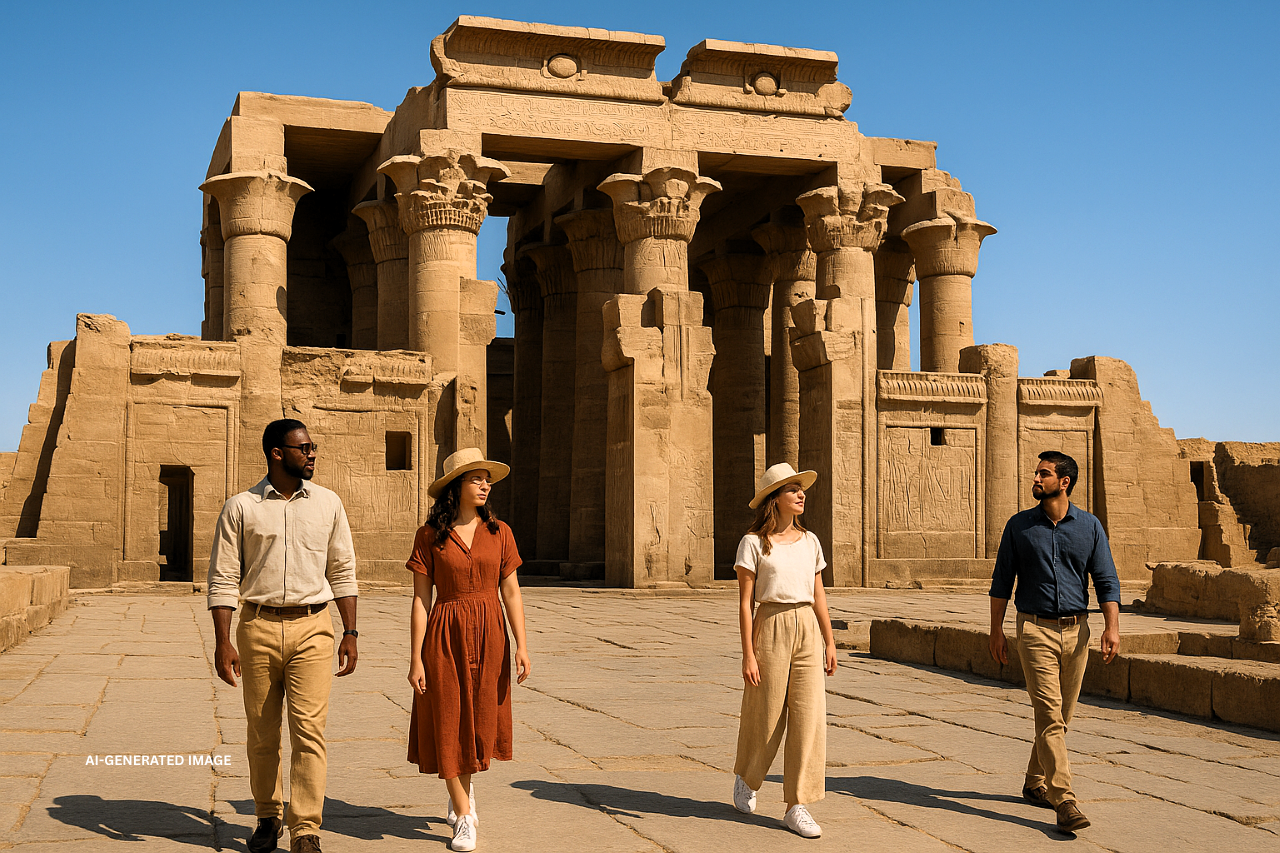
-
Dual Worship:
-
The temple honors two gods—Sobek, the crocodile deity, and Horus, the falcon-headed god. Each side of the temple is a mirror image of the other.
-
Crocodile Museum:
-
The adjacent museum houses fascinating displays of mummified crocodiles once revered in the area.
-
Tourist Tip:
-
Kom Ombo is a frequent stop on Nile cruises, making it easy to visit.
Edfu Temple
Further along the Nile is the Temple of Edfu, one of Egypt’s best-preserved temples.
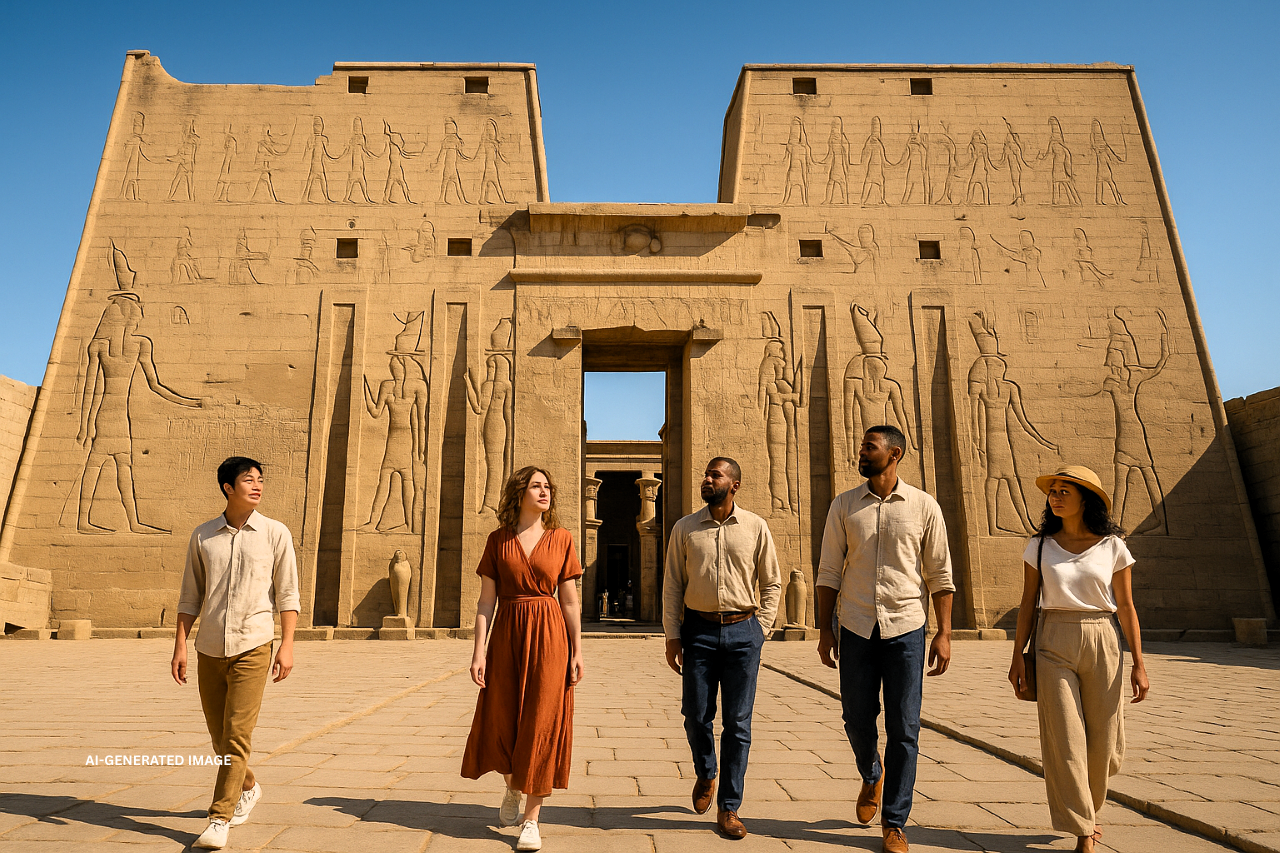
-
Construction:
-
Built during the Ptolemaic period, it features monumental pylons, spacious courtyards, and detailed inscriptions.
-
Mythological Significance:
-
The temple is dedicated to Horus and commemorates his legendary battle with Seth.
-
Getting There:
-
From the cruise dock, horse-drawn carriages usually transport visitors to the temple.
Nile River Cruises
A Nile River cruise between Luxor and Aswan is often described as the most enchanting way to explore Egypt.
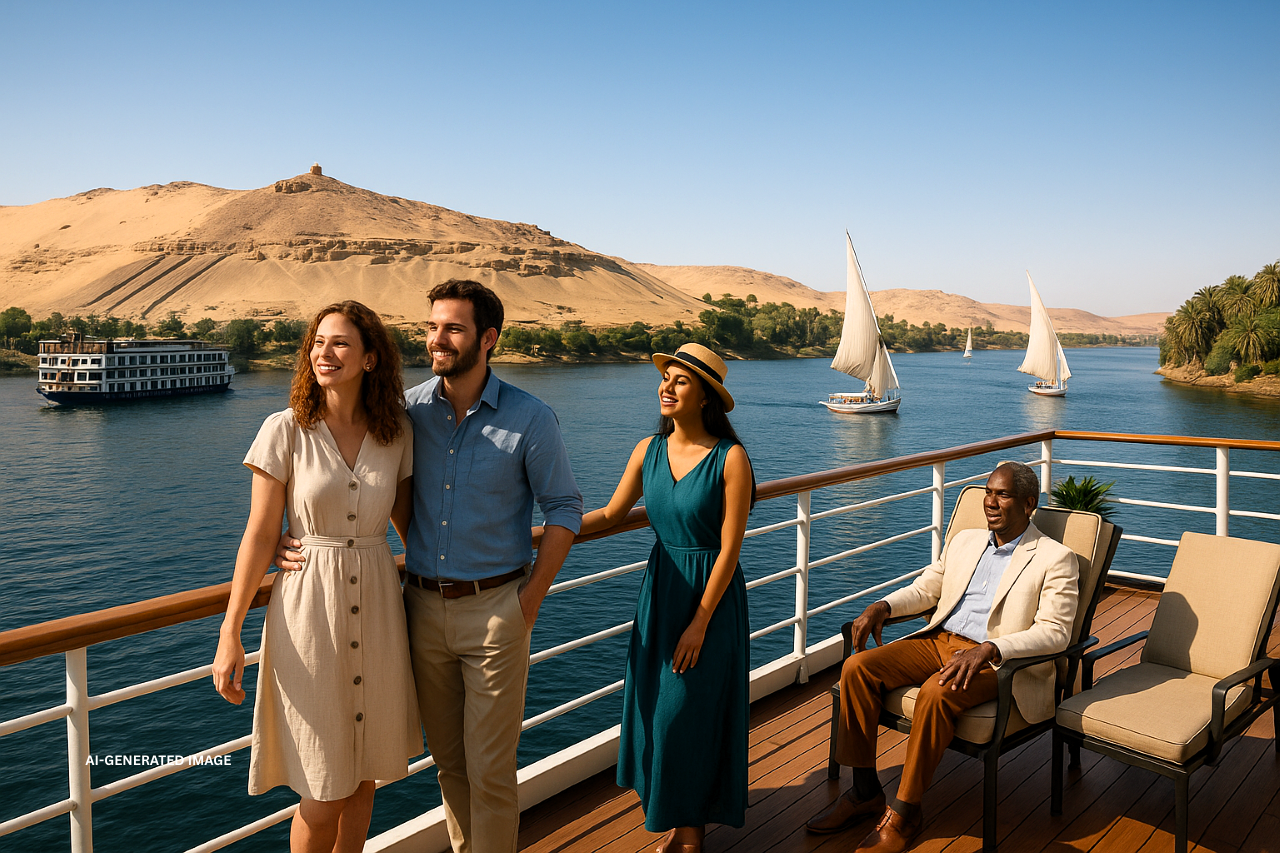
-
Cruise Options:
-
Luxury Vessels: Offering fine dining, spas, and guided excursions.
-
Standard Cruises: Comfortable mid-range boats ideal for most travelers.
-
Feluccas: Traditional sailing boats that provide a slower, more authentic experience.
-
-
Why Take a Cruise:
-
Visits to Kom Ombo and Edfu temples.
-
Leisurely days drifting past palm groves and riverside villages.
-
Stunning sunsets viewed from the deck.
-
Even without a multi-day cruise, a short felucca ride at sunset in Aswan is a must for any traveler.
Nubian Villages and Experiences
Exploring Nubian villages is one of the most enriching experiences in Aswan.
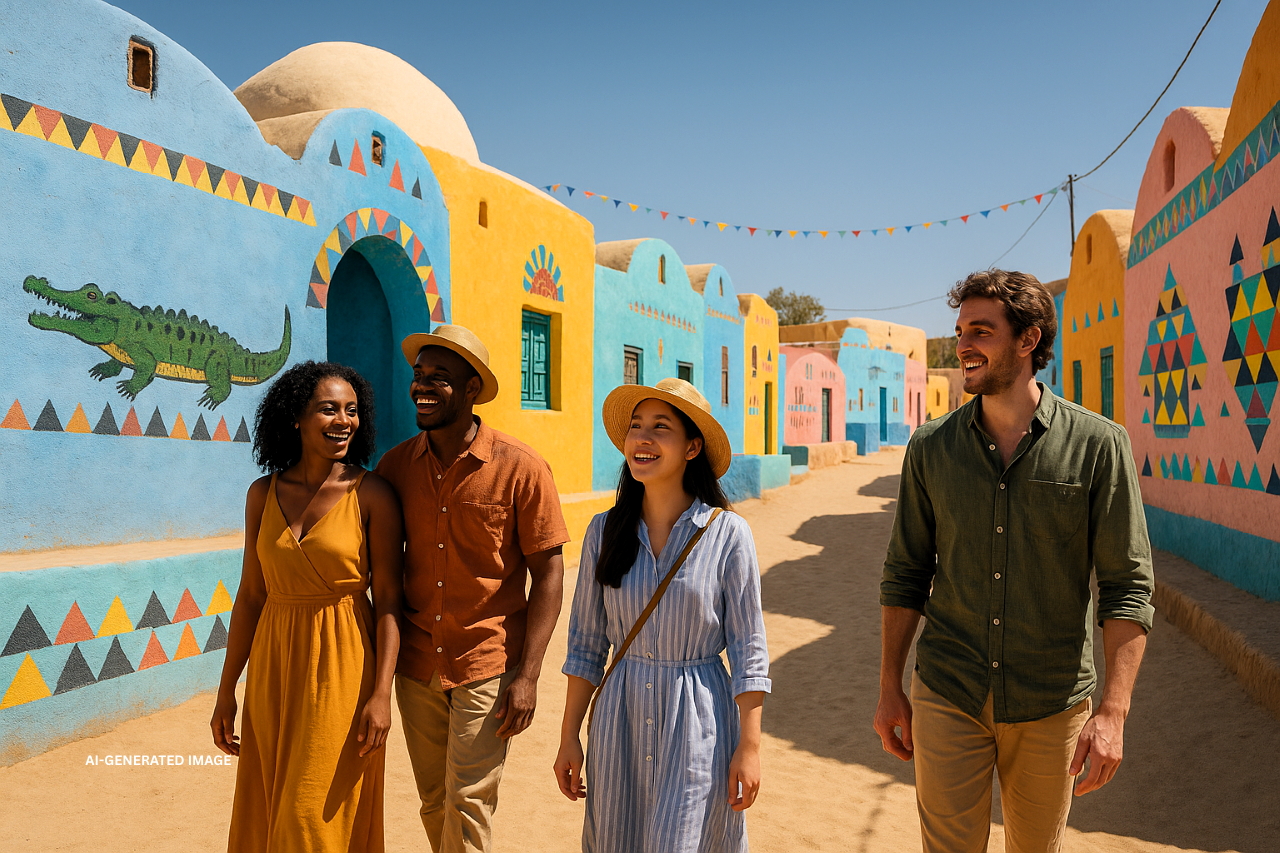
-
Gharb Soheil:
-
A popular village known for its brightly painted homes and warm hospitality. Visitors are often invited inside to enjoy traditional food and tea.
-
Cultural Highlights:
-
Henna painting, lively Nubian music, and dancing are part of the immersive experience.
-
Distinctive Architecture:
-
Houses are decorated with murals of animals, geometric shapes, and vibrant colors.
-
Hospitality:
-
Nubians are famously welcoming, often treating guests like family.
A visit here reveals the living traditions that make Aswan more than just a city of monuments.
Food and Cuisine
Dining in Aswan is a blend of Egyptian staples and Nubian specialties.
-
Traditional Nubian Dishes:
-
Shamsi Bread: Sun-dried bread with a unique texture.
-
Okra Stew (Bamya): A flavorful dish often prepared with meat.
-
Nile Fish: Freshly caught tilapia and perch, grilled to perfection.
-
-
Egyptian Favorites:
-
Koshari: A hearty mix of rice, pasta, and lentils topped with fried onions.
-
Ful Medames: A traditional fava bean stew, common for breakfast.
-
Stuffed Pigeon: A delicacy enjoyed during festive occasions.
-
-
Where to Eat:
-
Restaurants along the Corniche, floating dining boats, and meals in Nubian homes provide unforgettable culinary experiences.
Shopping
Shopping is an adventure in Aswan, particularly in its lively markets.
-
Aswan Souk:
-
A bustling marketplace filled with colorful stalls and vibrant energy.
-
What to Buy:
-
Aromatic spices such as hibiscus, cumin, and saffron.
-
Handmade Nubian jewelry in silver and beads.
-
Textiles and scarves with intricate embroidery.
-
Perfume oils and natural incense.
-
-
Shopping Tips:
-
Bargaining is expected and often enjoyed as part of the experience. Visiting in the evening offers the best atmosphere, with music and food stalls adding to the charm.
Festivals and Events
Aswan celebrates a variety of festivals that showcase its culture and heritage.
-
Abu Simbel Sun Festival:
-
Twice a year, sunlight floods the temple’s sanctuary, illuminating Ramses II and the gods.
-
Nubian Festivals:
-
Celebrations filled with music, dance, and community gatherings keep traditions alive.
-
National Holidays:
-
Egyptian holidays are observed here with pride, offering travelers a chance to witness local festivities.
Accommodation Options
From luxury resorts to traditional guesthouses, Aswan offers accommodations for every traveler.
-
Luxury Hotels:
-
Old Cataract Hotel:
-
Famous for its colonial charm and notable guests, including Agatha Christie.
-
Mövenpick Resort:
-
Located on an island with panoramic views of the Nile.
-
-
Mid-Range Hotels:
-
Comfortable options near the Corniche, perfect for couples and families.
-
Budget Choices:
-
Hostels and simple lodges cater to backpackers and budget-conscious travelers.
-
Nubian Guesthouses:
-
Staying in a traditional Nubian home offers cultural immersion with authentic hospitality.
Wherever you choose to stay, proximity to the Nile ensures beautiful scenery and easy access to the city’s highlights.
Practical Travel Tips
Visiting Aswan is a rewarding experience, but a little preparation can make your trip even smoother.
-
Safety:
-
The city is one of the safest destinations in Egypt. Locals are friendly and welcoming, but as with any tourist hub, keep an eye on your belongings in crowded areas.
-
Dress Code:
-
Lightweight, modest clothing is best. Long trousers, skirts, and loose tops will keep you comfortable in the heat and show respect for local customs.
-
Managing the Heat:
-
Carry bottled water, sunscreen, and a hat. Plan your sightseeing in the early morning or late afternoon to avoid the intense midday sun.
-
Transportation:
-
Within the city, taxis, tuk-tuks, and boats are the most common ways to get around. For longer journeys, trains, flights, or private tours are the most convenient.
-
Currency:
-
The local currency is the Egyptian Pound (EGP). Credit cards are accepted in hotels and larger restaurants, but small shops and markets prefer cash.
-
Language:
-
Arabic is the official language, though English is widely spoken in tourist areas. Learning a few basic phrases like Shukran (“thank you”) and As-salamu alaykum (“peace be upon you”) goes a long way in connecting with locals.
Aswan in Modern Egypt
While much of Aswan’s charm lies in its ancient heritage, the city also plays an important role in modern Egypt.
-
Tourism:
-
Tourism remains one of Aswan’s main industries, drawing thousands of visitors annually for Nile cruises, temples, and Nubian culture.
-
Economy:
-
The Aswan High Dam provides electricity and irrigation, while Lake Nasser supports fishing and agriculture.
-
Culture:
-
Nubian traditions remain strong, preserved through festivals, guesthouses, and cultural centers.
-
Gateway to Africa:
-
Located near the Sudanese border, Aswan continues to act as Egypt’s southern gateway, reflecting its historic role as a crossroads between North Africa and Sub-Saharan Africa.
Modern Aswan successfully balances its identity as a living city with its role as a guardian of Egypt’s past.
Conclusion
Aswan is a destination where ancient wonders meet living traditions. Its temples, tombs, and quarries echo stories of Egypt’s pharaohs, while its Nubian villages radiate warmth and hospitality. From sailing on the Nile at sunset to wandering spice-filled markets, every experience reveals a different side of this timeless city.
Unlike the hustle of Cairo or the grandeur of Luxor, Aswan offers peace, authenticity, and cultural depth. It is a place where history and modern life blend seamlessly, leaving visitors with lasting memories. For anyone seeking both serenity and adventure, Aswan remains one of Egypt’s most unforgettable gems.
FAQs
What makes Aswan unique compared to other Egyptian cities?
Aswan combines monumental temples with Nubian culture and a relaxed riverside atmosphere, offering a different pace compared to Cairo and Luxor.
How many days should I spend in Aswan?
Two to three days are ideal to explore the main highlights, though extra time allows for deeper cultural experiences or a Nile cruise.
Can Abu Simbel be visited in a single day from Aswan?
Yes. Both buses and flights make day trips possible, although it involves a long journey of about 3–4 hours each way.
Is Aswan safe for solo travelers?
Yes, Aswan is considered one of the safest cities in Egypt. Solo travelers, including women, often find it welcoming and easy to navigate.
What is the best way to travel between Luxor and Aswan?
The most scenic option is a Nile cruise. Trains and buses are also available for faster or budget-friendly travel.
Are there direct flights to Aswan?
Yes, Aswan is directly connected to Cairo and Abu Simbel with frequent domestic flights.
What cultural experiences should I not miss?
A visit to Nubian villages, exploring the Nubian Museum, and attending local festivals are highly recommended.
Can I swim in the Nile at Aswan?
Swimming is not advised due to currents and water conditions. Sailing in a felucca or motorboat is a safer way to enjoy the river.
What souvenirs should I buy in Aswan?
Spices, handmade jewelry, colorful textiles, and Nubian artwork are popular choices.
When is the best time to visit Aswan?
The ideal time is from November to March when the weather is cooler and more comfortable for sightseeing.
